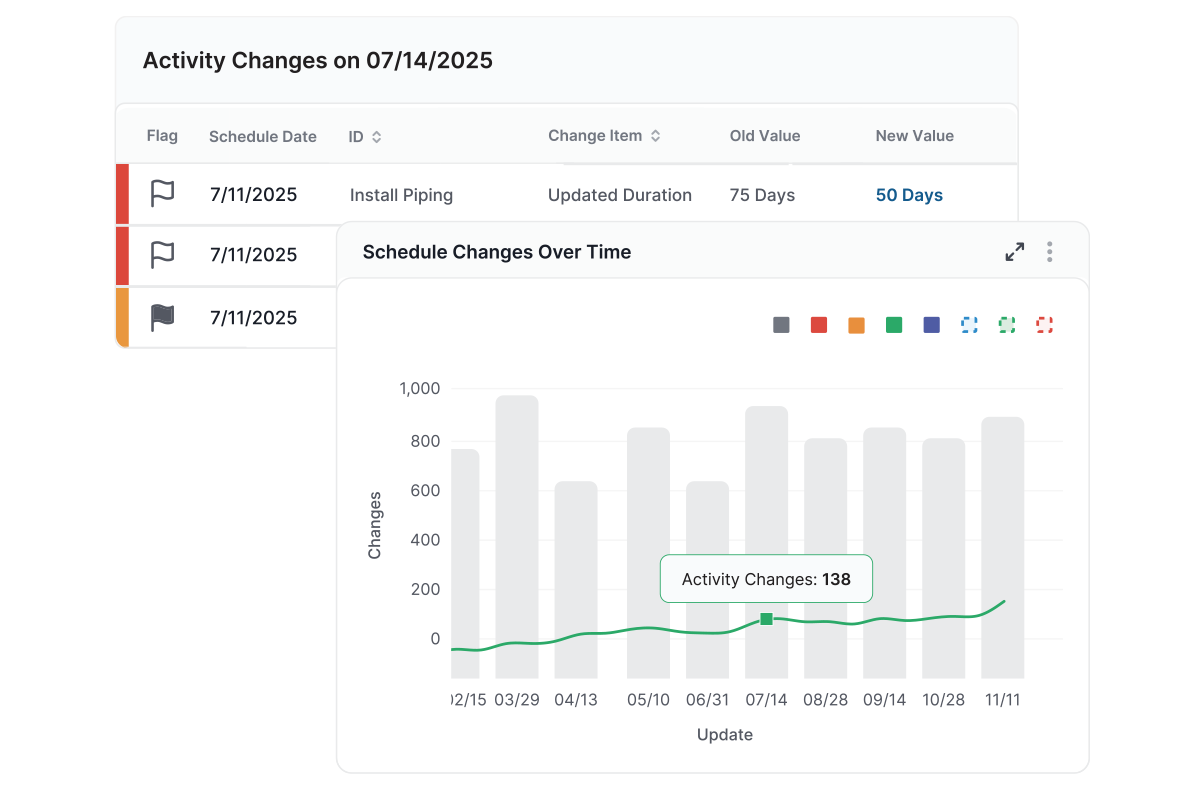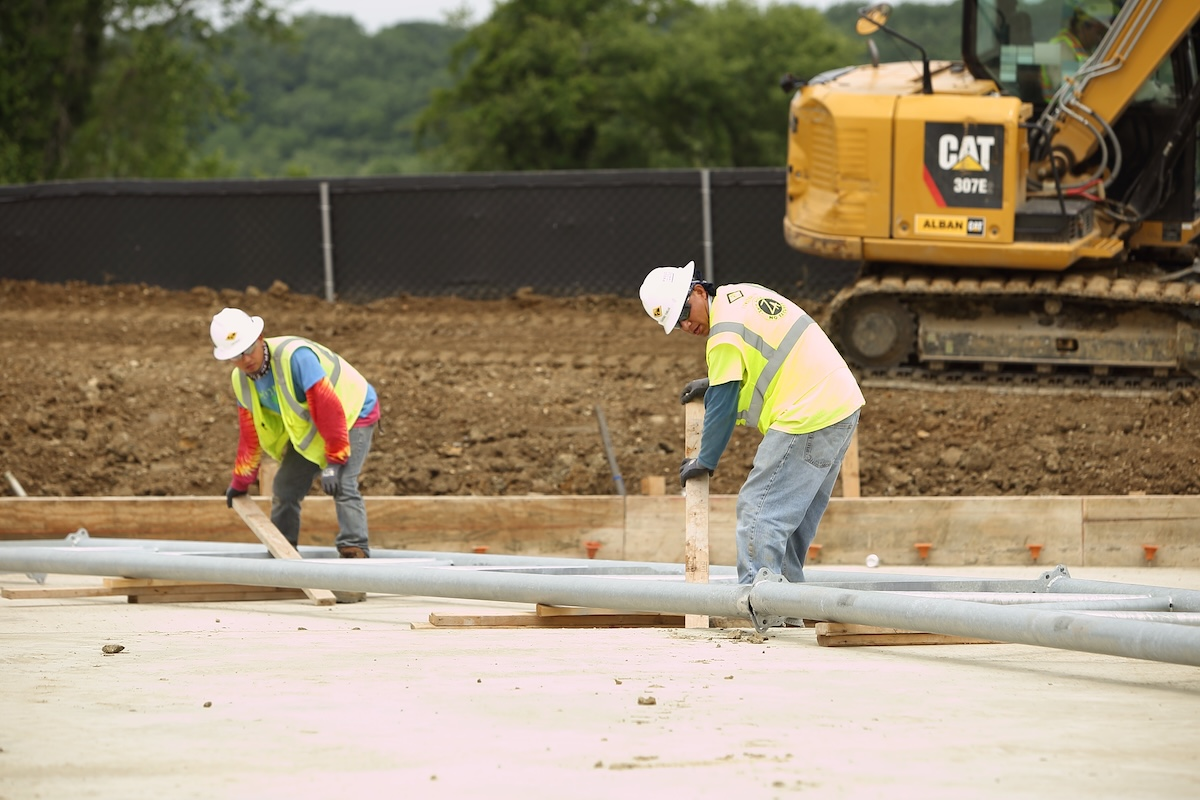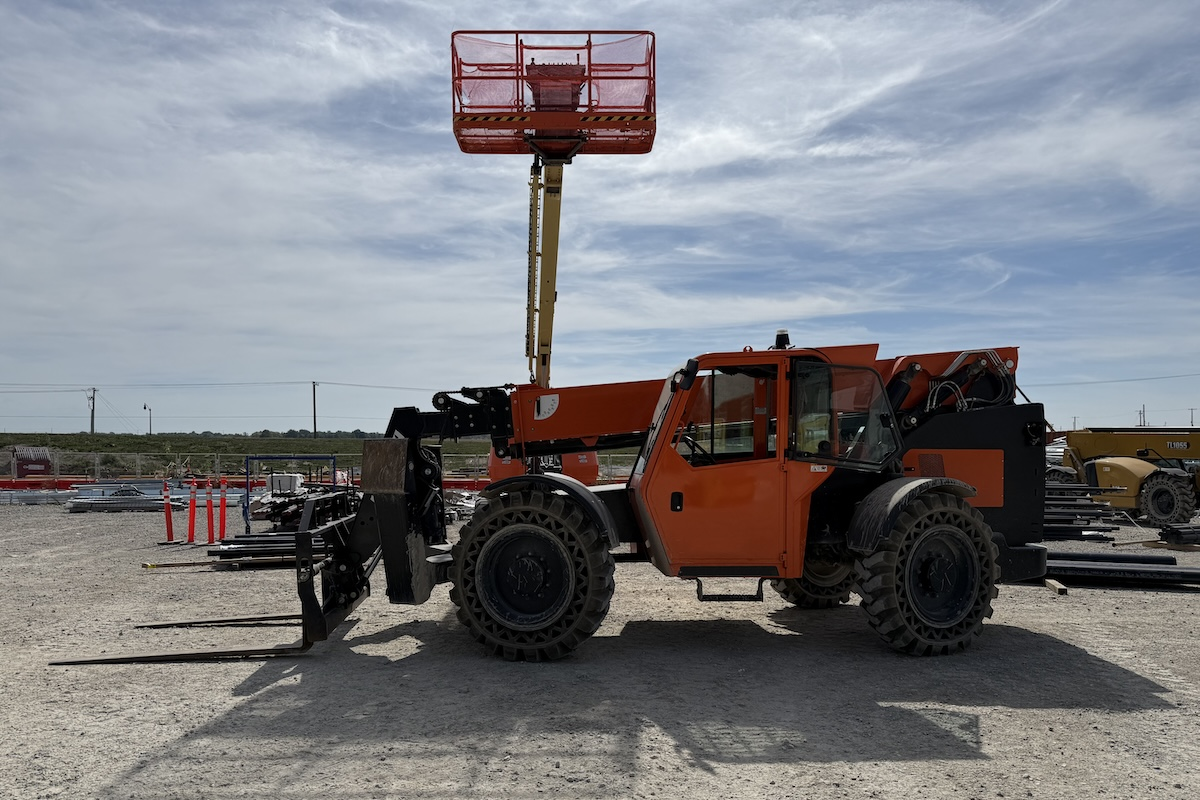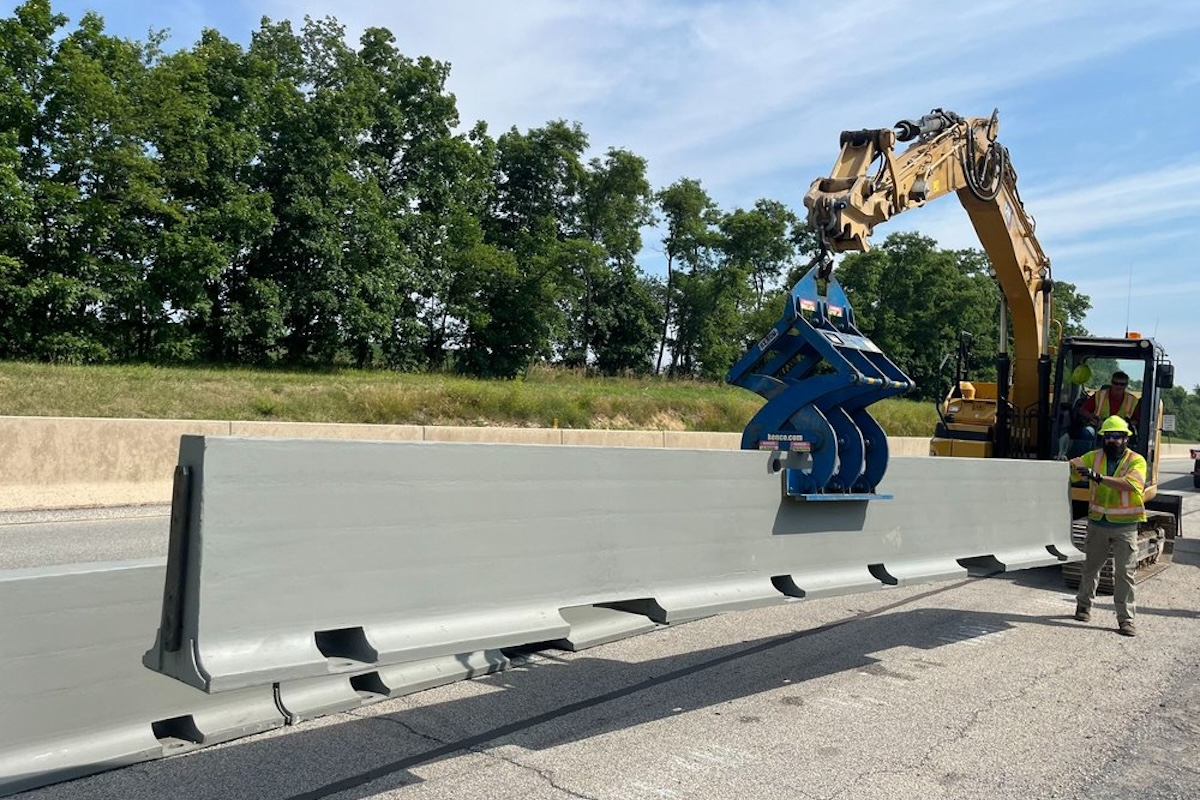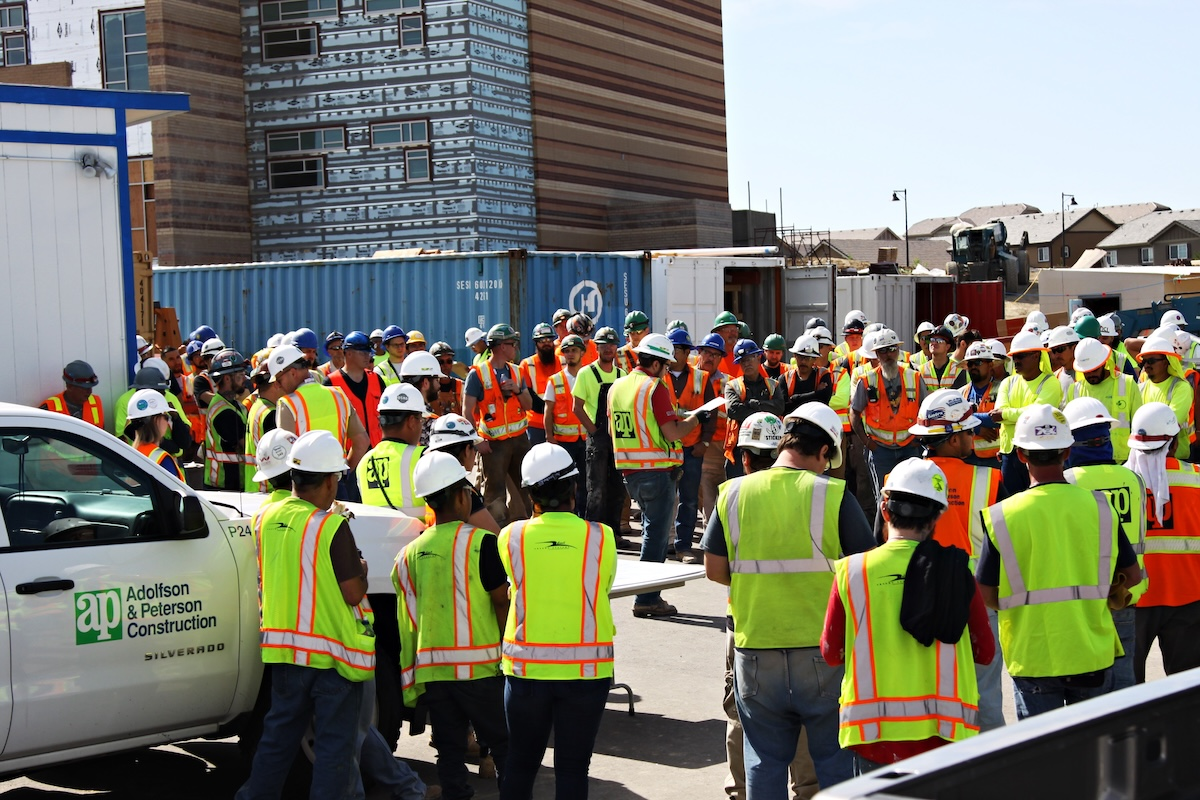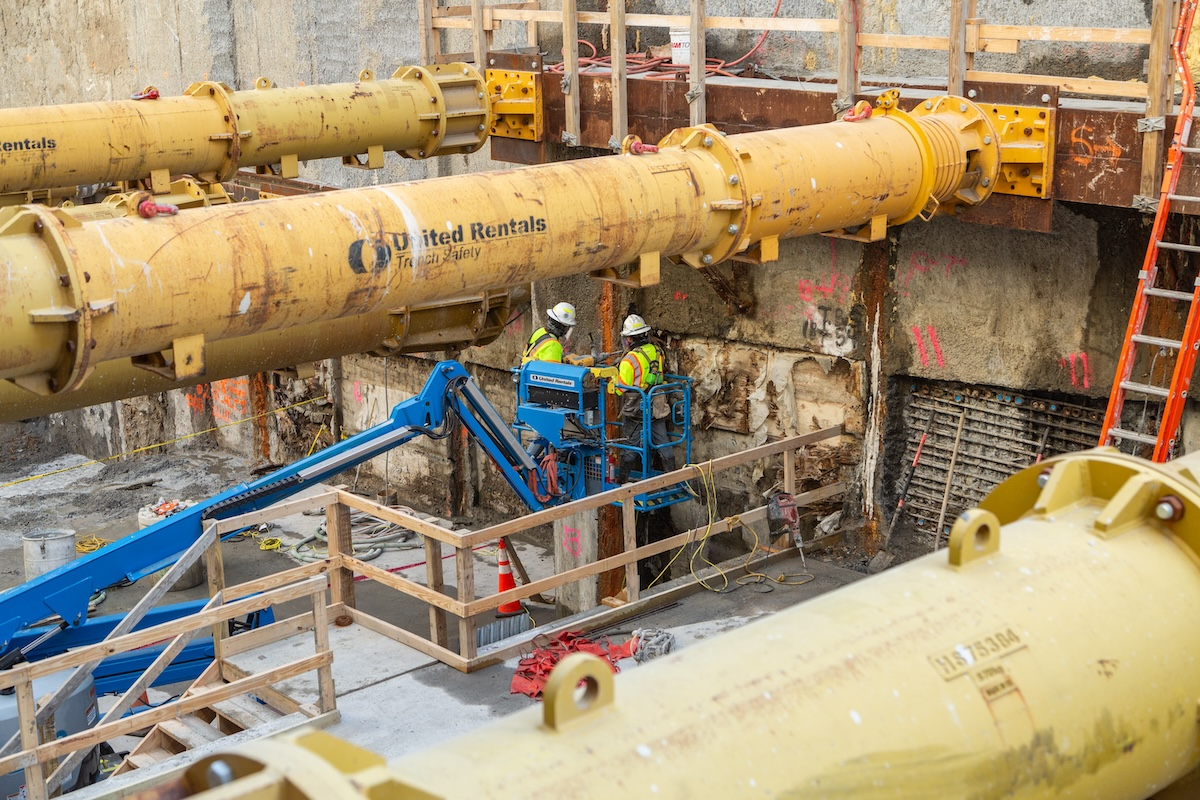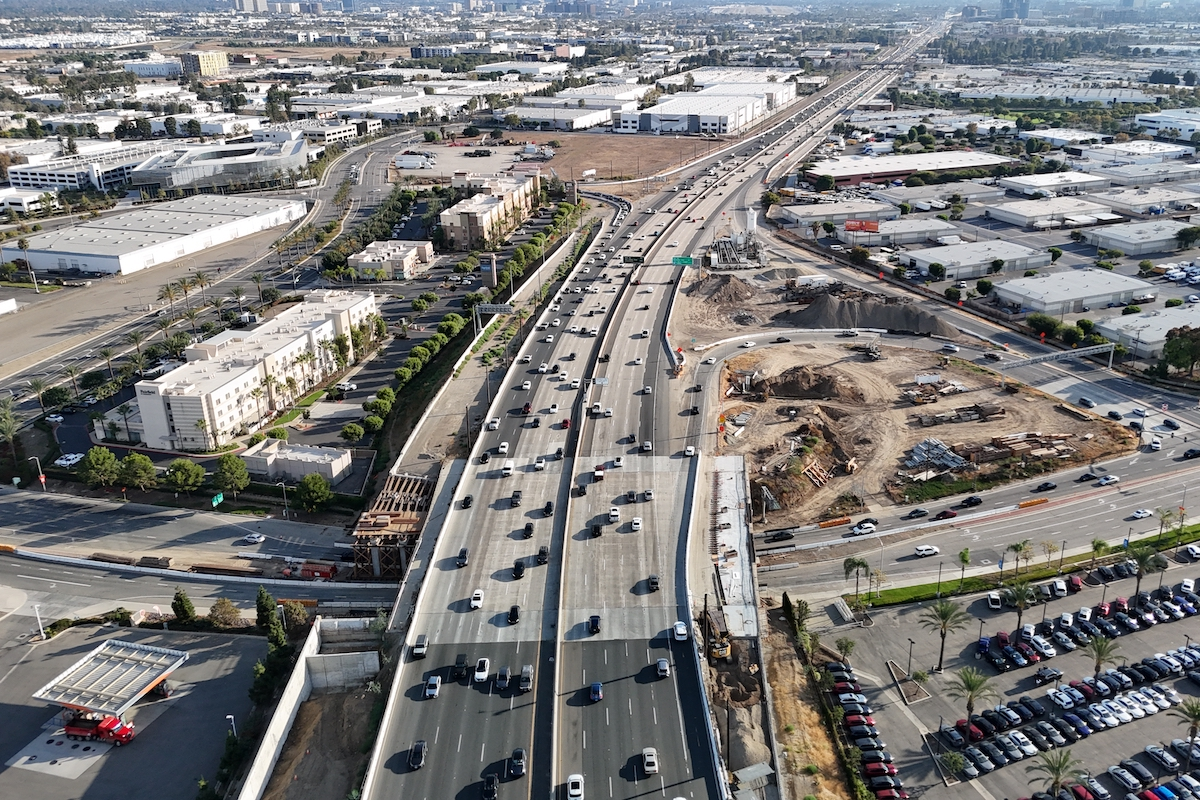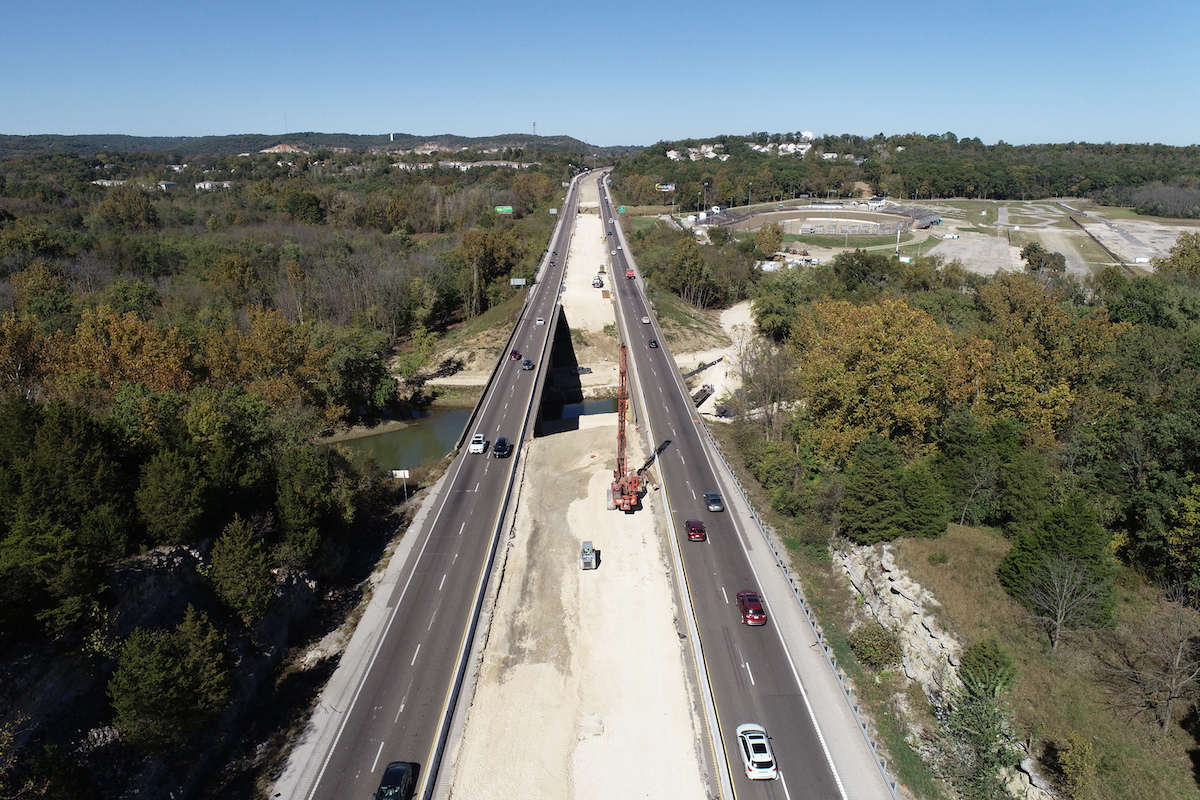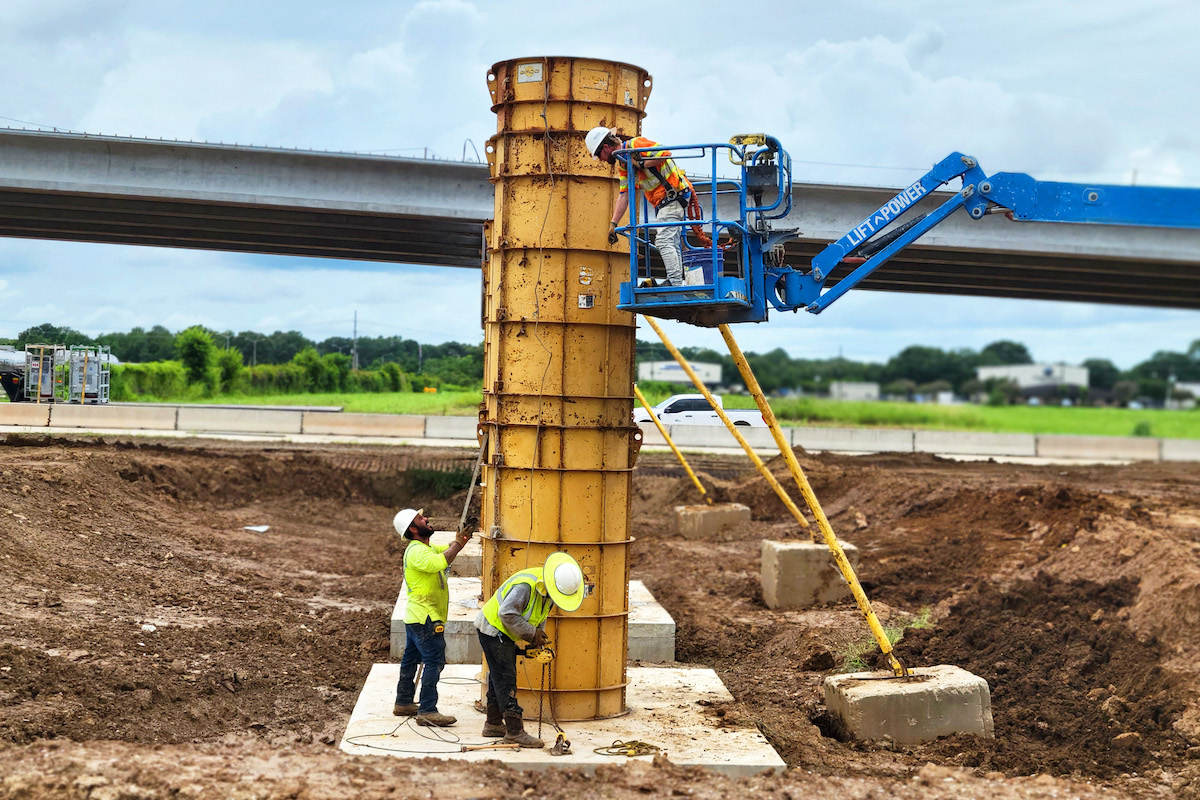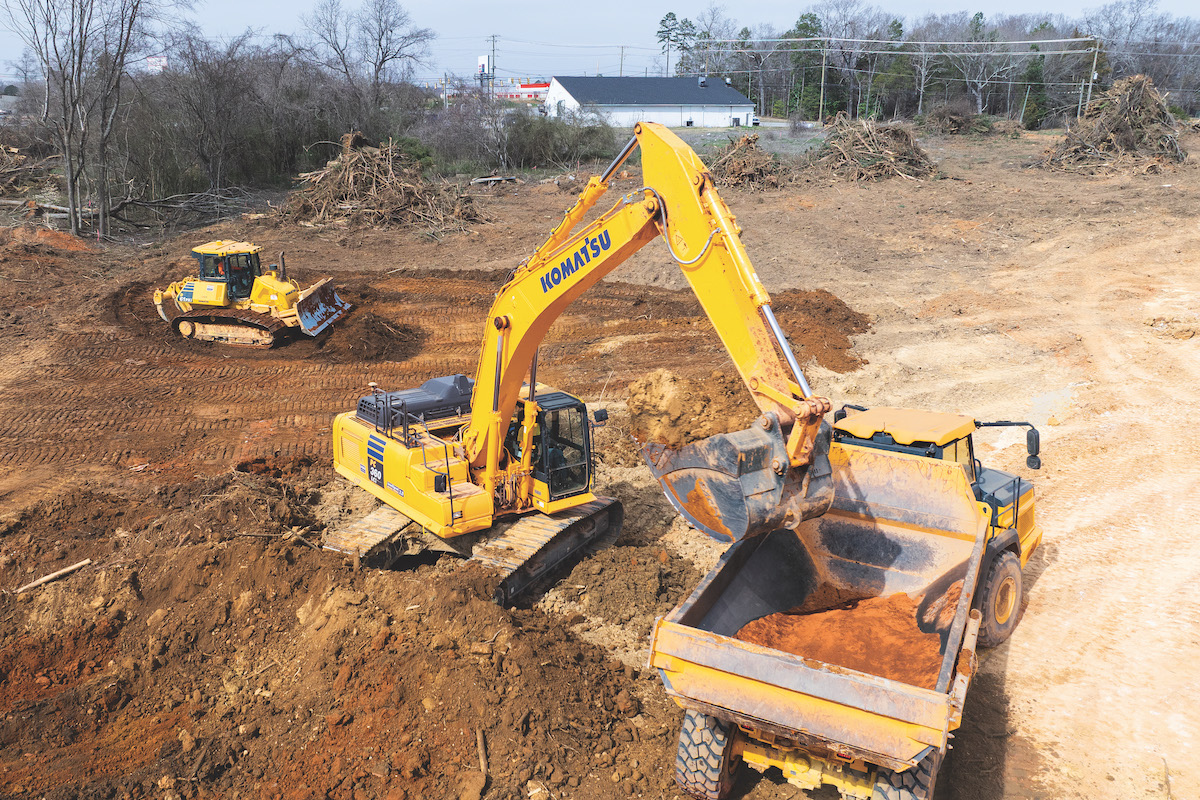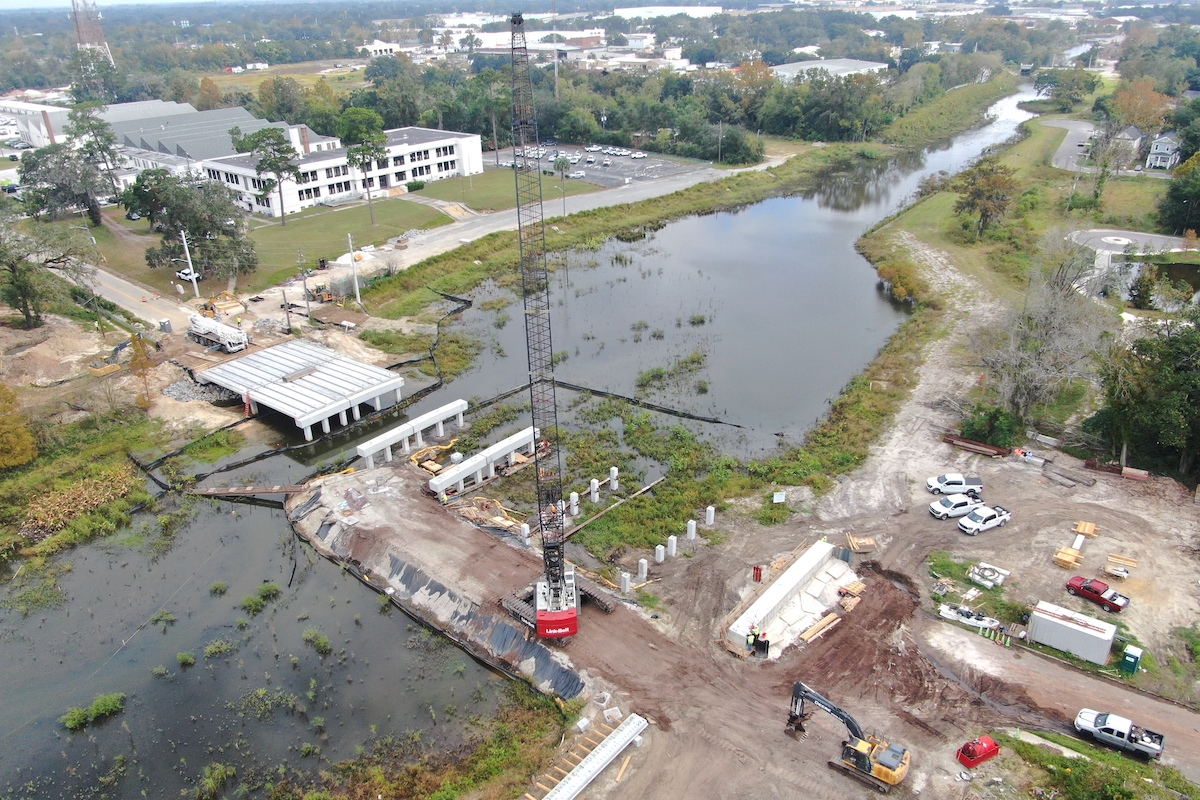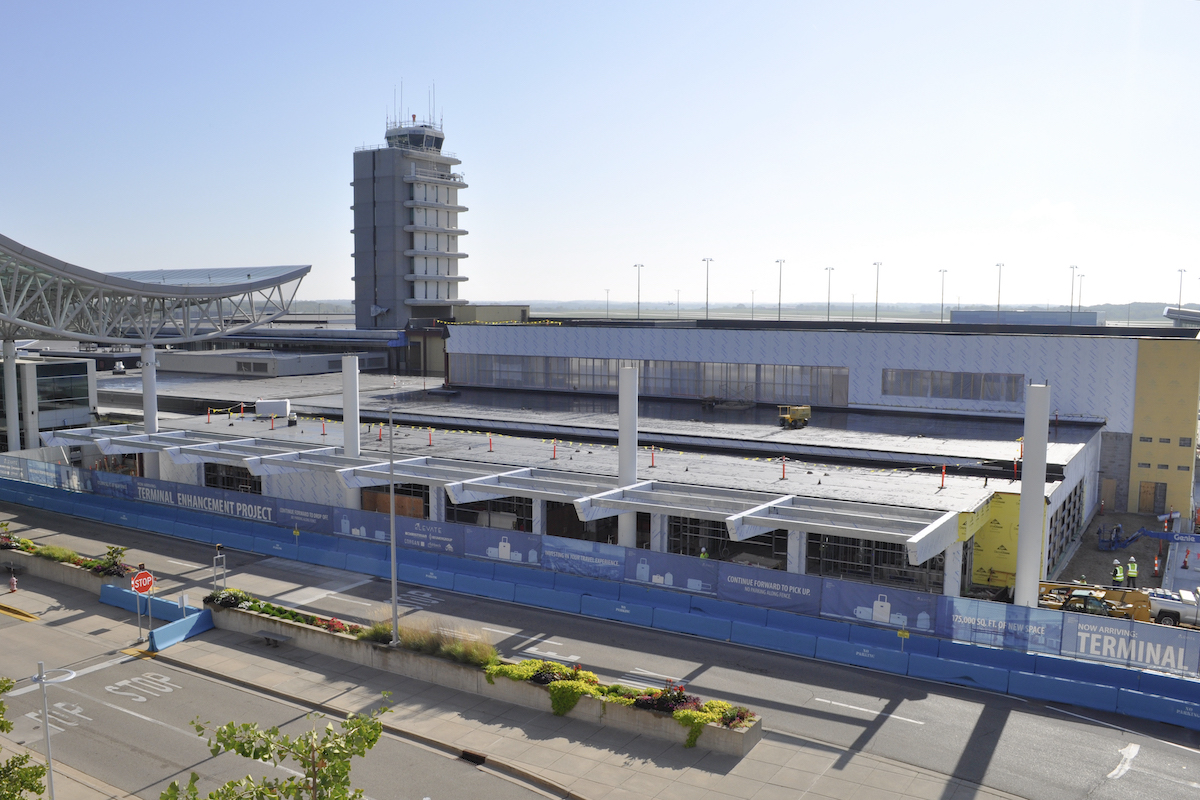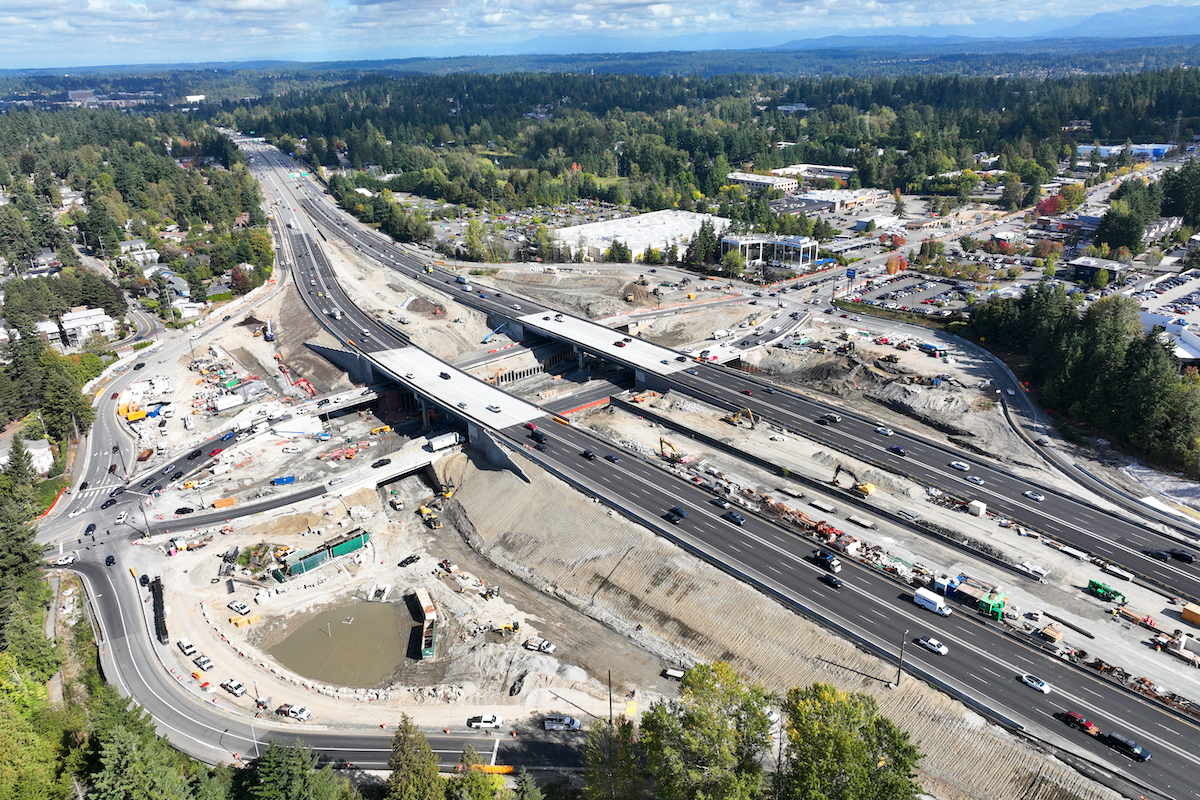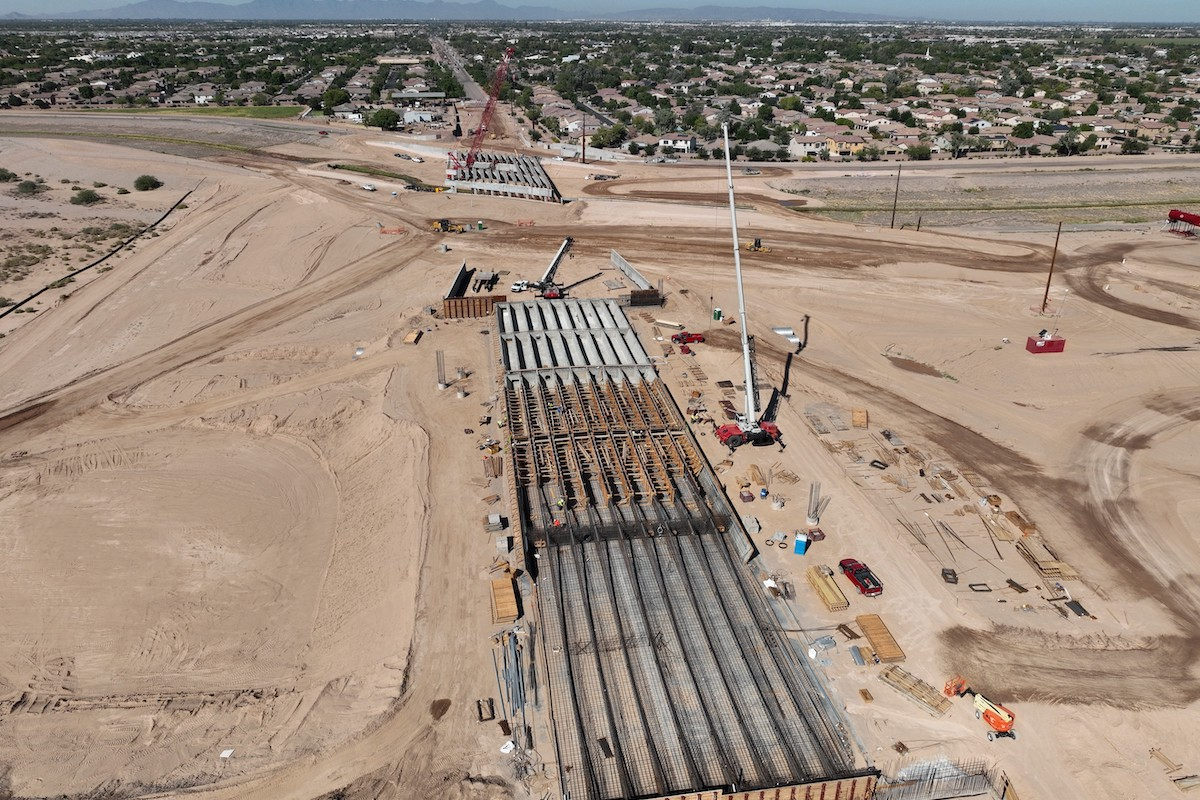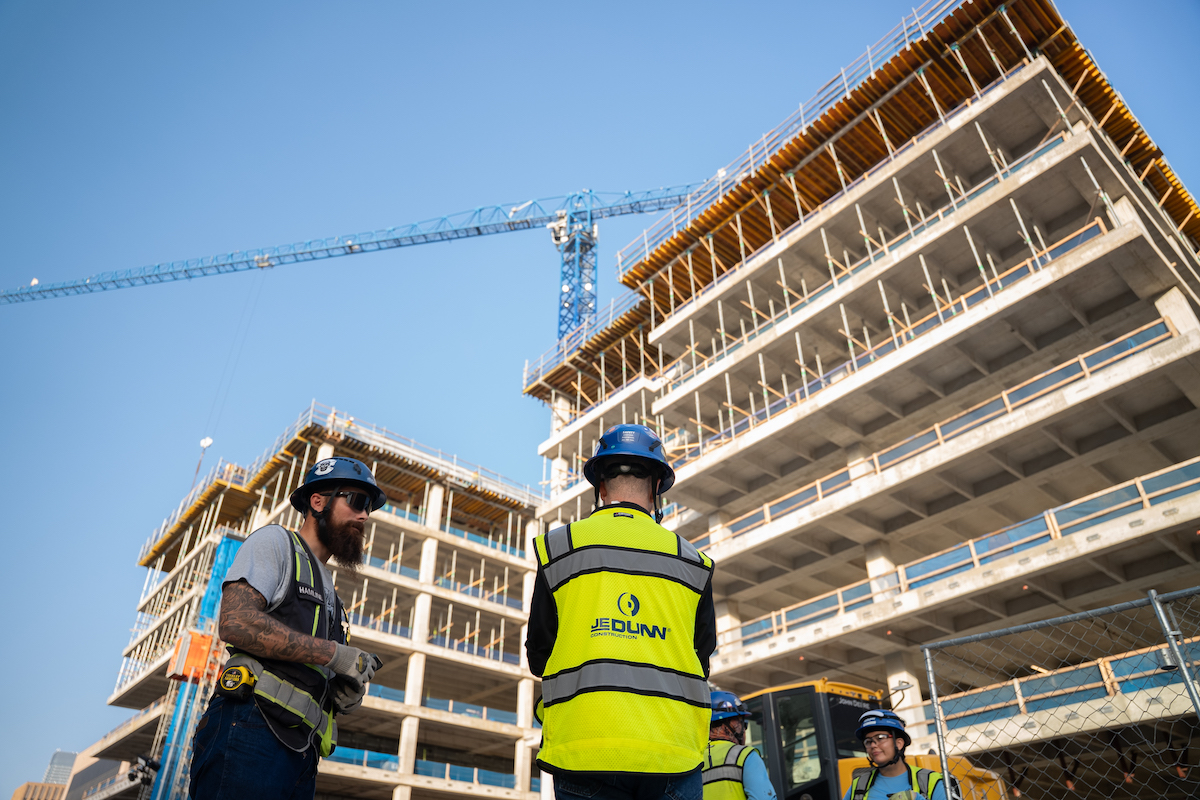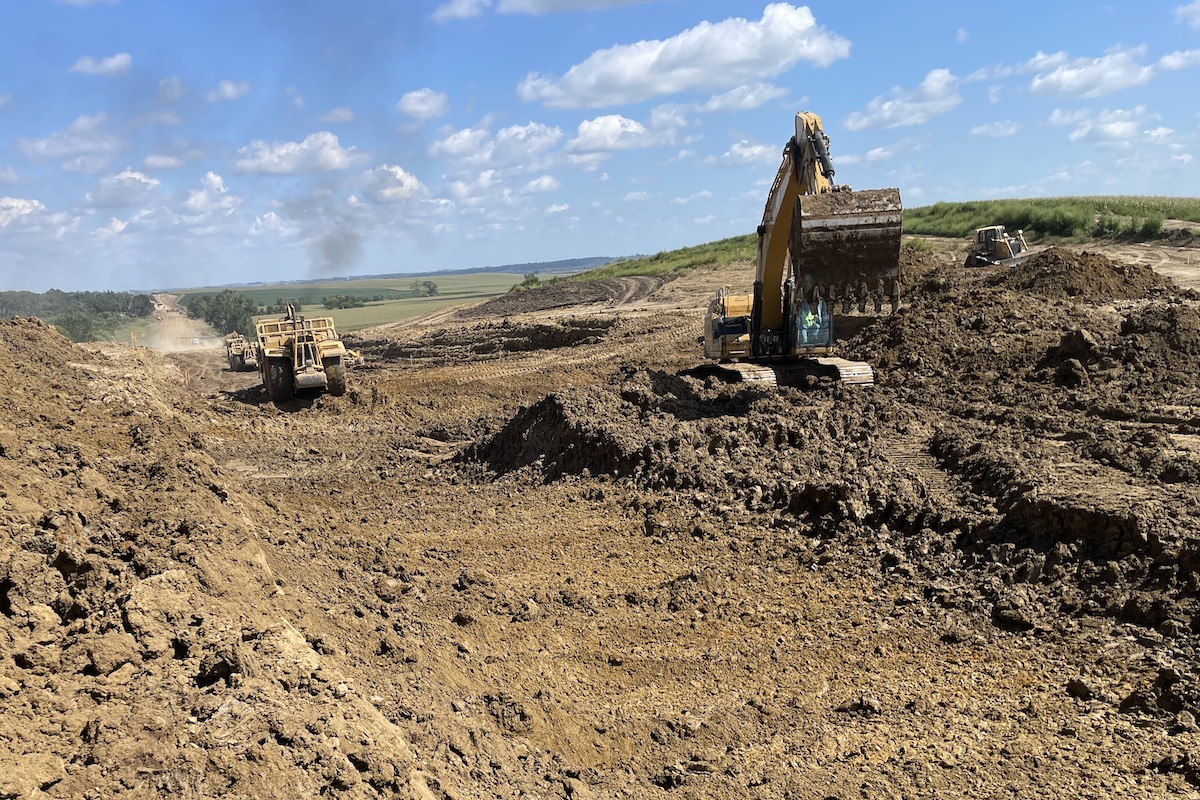Located in the southwest corner of Iowa, Council Bluffs sits on the east bank of the Missouri River across from Omaha, Nebraska. In Council Bluffs, construction on a $1.5 billion Interstate System Improvement Program was started in 2008. The goal was to modernize the transportation system and improve area safety and mobility. It has increased capacity on area interstates and highways and upgraded them to meet today's standards.
The Iowa Department of Transportation (Iowa DOT) and Hawkins Construction are currently working on the final piece in the Council Bluffs Interstate System Improvement Program, the Madison Avenue Interchange project. Since 2013, HDR has served as the program manager and general engineering consultant.
The interchange was initially constructed in the 1960s. Since then, it has had routine maintenance but no significant updates. It has now surpassed its intended lifespan.
The reconstructed interchange will have a similar formation to the previous interchange — a tight urban diamond interchange (TUDI). According to the Federal Highway Administration, a TUDI "is used in urban and suburban areas where right of way is a constraint. ... The key operational aspect of a TUDI is signal coordination to ensure efficient progression of traffic and minimum storage of vehicles between the terminals."
The Madison Avenue Interchange reconstruction involves rebuilding the interchange and six bridges over Madison Avenue, Mosquito Creek, and Valley View Drive. This project will also include the construction of more extended acceleration lanes when merging onto I-80 and allow drivers to turn right from Madison Avenue onto the I-80 westbound ramp without stopping.
Before construction, the ramps were steeper, and it took more time for trucks and other vehicles to accelerate. Traffic also had to stop for oncoming vehicles to turn onto the ramp. Now they will be able to turn and then merge if oncoming traffic is turning onto the ramp.
"The Madison Avenue project is the final piece in the comprehensive Council Bluffs Interstate System Improvement Program and will expand the interstate capacity to the east of the I-80/I-29 East System interchange and replace deteriorating bridges," said Scott Schram, Iowa DOT District 4 Engineer.
The project was split into two: eastbound and westbound. Additions include four lanes for through traffic, a new eastbound lane, and turning lanes. The added capacity is necessary, as the 2023 average daily traffic (ADT) on the interchange is approximately 55,000, of which 20 percent are trucks. The ADT for 2040 is estimated to reach 80,000 vehicles.
Another addition is a bike/pedestrian path along Madison Avenue. Previously, there was a sidewalk. It is near an existing trail system, and the city wanted to extend it to allow bicyclists to get off the street in this busy intersection.
When cities are on a waterfront, they can have multiple benefits like being a tourist attraction, offering scenic views, and hosting recreational activities. The downsides may include heightened potential for flooding and possible impact on drinking water.
A high water table is another potential issue when water is in the area. This issue has been a factor in the Madison Avenue Interchange projects, which are over Mosquito Creek. Schram said that the high water table in the area and other geotechnical issues require stabilizing the existing soil upon which the new bridges and pavement are being built.
Since the project began, the site has experienced localized flooding due to spikes in Mosquito Creek water levels caused by winter and spring rain events. These complicated the construction process.
One way the team has continued to move forward on the project despite the water challenges is collaboration. "The team has collaborated effectively with the contractor to develop appropriate mitigation strategies that will be used throughout the duration of construction," Schram said.
The collaboration led the team to use lightweight, durable, rigid geofoam blocks as an alternative to traditional dirt or concrete fill on some new roadways.
"Because soils in the project area are highly compressible, traditional fill would be prone to compaction and settle significantly over the coming year and shorten the lifespan of pavement and structures," Schram said. "The geofoam blocks can handle the weight of the interstate and its traffic for decades, alleviating long-term settlement issues and helping us design an interstate system that is built to last for generations."
Constructing a bridge over a navigable waterway poses inherent challenges, but building one that spans a creek, railroad track, and city street is particularly challenging.
"Working through the permitting and plan approval process is just the beginning,” Schram said. “Multiple work plans need to be submitted for review and approval months in advance to minimize delays.”
There were multiple stakeholders to consider, including commercial property owners, resident homeowners, and apartment dwellers. The team went to great lengths to accommodate all the stakeholders.
Schram and the team coordinated overnight road closures with the businesses to make sure they are not impacted. They completed demolition of the old bridges during the day, so they did not impact residents while sleeping, even though it was a 24-hour operation. Contractors performed the loud work from 7 a.m. to 10 p.m., then did clean up until the next day at 7 a.m. for a full weekend.
Some of the utility relocations took place before construction. However, Schram said that "it was impractical to do some of the utility relocation before construction began. When we identified utilities that needed to be relocated once construction began, we mitigated it as quickly as possible to minimize the impact on area residents and traffic."
And then there are the traffic management challenges. With significant traffic on the interstate daily, Iowa DOT was concerned about traffic impacts during construction. Interstate roadways and ramps, along with city roadways, must remain open to the public, so staging and protection of the workers, heavy equipment, and materials is constantly changing.
"The project team developed staging and maintenance of traffic plans, and detours were developed to assist drivers to get where they need to in the most efficient way," Schram said.
They build temporary roadway as needed to accommodate various traffic shifts.
Hawkins Construction Company, a fourth-generation family-owned and -operated construction firm, is headquartered in Omaha, Nebraska. Schram said he has been pleased with Hawkins’ work on the Madison Avenue Interchange projects.
"They bring a wealth of expertise, having actively participated in numerous stages of the Council Bluffs Interstate Improvement Program,” he said. “Their established rapport with the Iowa DOT is a testament to their ability to navigate the intricacies of needed procedures, ensuring efficient communication and prompt progression of change approvals."
Hawkins is serving as the general contractor on both the eastbound and westbound projects.
"Their involvement equips them with a nuanced understanding of the area's specific requirements," Schram said. "This insight allows for a seamless transition and continuity in the project's execution, further underscoring their suitability for this undertaking."
Schram added that Hawkins takes a meticulous approach to plan review, which empowers them to identify strategic opportunities for value engineering. "Hawkins' value engineering not only enhances the overall quality of the project, but also delivers cost-saving benefits for taxpayers," he said.
The two Madison Avenue projects have a budget of $114 million. While there have been some change orders related to the project, they have been under 2 percent of the overall cost of the projects. Currently, the projects are on budget (with the contingency). The federal and state governments are providing the majority of the funding for the projects. The City of Council Bluffs is paying for some of the sewer work associated with the contracts.
Construction on the eastbound side began in 2022 and wrapped up in spring 2024. Westbound construction began in early 2024, with most of the work to be completed by the end of 2025. The project is scheduled to wrap up in spring 2026. The eastbound contract package was completed on schedule earlier this year, while the westbound contract is trending slightly ahead of schedule. Schram credits the on time and early completion to good weather and proactive construction coordination.
When the project is finished, it will complete the Council Bluffs Interstate System Improvement Program. The program's goals of modernization and safety will be realized, as the project will update an over 50-year-old piece of infrastructure. The additional capacity will allow the interchange to serve the community as it grows. The extra turning lanes will increase safety and mobility. Finally, pedestrians and bicyclists will be able to enjoy the new path.
- Owner: Iowa Department of Transportation
- General Contractor: Hawkins Construction Company, Omaha, Nebraska
- Designers: HDR, Omaha, Nebraska; WHKS, Ames, Iowa; Iowa Department of Transportation, Ames, Iowa
- Other Key Contractors: Iowa Plains Signing, Slater, Iowa; National Concrete Cutting, Council Bluffs, Iowa; Peterson Contractors, Reinbeck, Iowa; Sadler Electric, Omaha, Nebraska; Compass Utility, Council Bluffs, Iowa; Iron Works, Nebraska City, Nebraska













